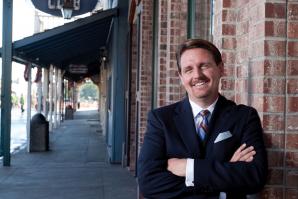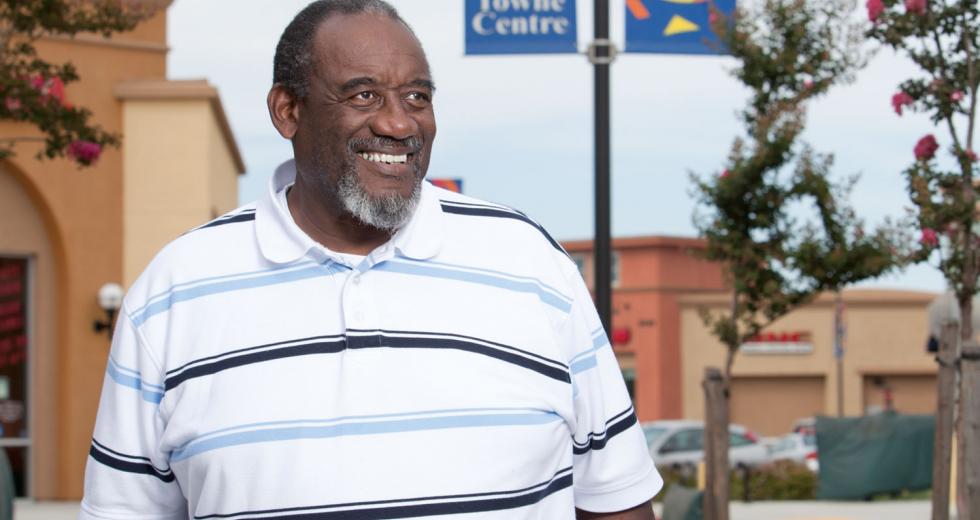Now in its 15th year, the Florin Road Partnership might be one of the region’s great turnaround stories.
As a successful Property and Business Improvement District, it has leveraged nearly $25 million in public funds for streetscapes and other improvements. Its work has helped attract a Wal-Mart Supercenter, compelled businesses outside the district to ask if they could join, and made the area so economically viable that the $70 million Florin Towne Center has been developed on the site of the former Florin Mall. It’s also one of the only PBIDs in the country that has formed its own foundation — with money raised independently by its members — to fund scholarships, sponsor events and youth sports teams, and support neighboring community associations.
That’s a far cry from the state of the area prior to the district’s formation in 1996.
“Florin Road was just devastated,” says Larry Carr, executive director for Florin Road Partnership. “It was one pothole after another, several of the buildings were eyesores and with a vacancy rate of 40 percent, almost every other door was dark.”
From its very first days, the Partnership and its leaders knew they couldn’t tackle everything at once. Among the first priorities was making the road look better. New medians, beautification programs, new pavement on the street and cleanup programs to remove garbage and graffiti sparked a prosperous and cooperative relationship with the city and the county.
In 2001, when the partnership was renewed for the first time, improving the look and feel of the area continued. The Partnership entered into an agreement with Sacramento Regional Transit to get covered bus stops. It also replaced old garbage cans with newer, more decorative trash bins, which the Partnership maintains daily.
The renewal also brought a stepped-up focus on reducing crime in the area. The Partnership formed a Security Task Force comprised of property owners and representatives from local government agencies, community groups, the California Highway Patrol, private security companies, the Sacramento Police Department and the Sacramento County Sheriff’s Department. In its nine years, the task force has made measurable success — to the point that the district is no longer considered a high-crime area.
“I think one of the best ideas has been the hiring of special security patrols during the holidays,” says Thomas Burruss, president of Burruss & Associates and a member of the Partnership’s board of directors. “I don’t think there’s been a single case of a business being robbed during the holidays for the past four years.”
By 2006 the area’s vacancy rate was hovering around zero, and the Partnership was fielding calls almost daily from businesses interested in relocating there. With so much development happening and so many encouraging signs, property owners took the unusual step of renewing the Partnership for a 10-year term. Many of its founding programs continued: The cleanup program removed 2,634 bags of garbage, 535 noncompliant signs and 653 shopping carts last year alone. However, it also had to focus on new challenges.
“All across the country, auto dealers were being forced by their corporate headquarters to migrate away from thoroughfares and into auto malls,” Carr says. “That left us with more than 40 acres of available space.”
Rather than scramble, the Partnership worked with the auto dealers, who all agreed to assemble their properties and market them as one unit. Doing so has enabled the partnership to work toward a vision of a master planned community in the space with mixed-use retail and residential development. That vision is nearing completion of the second phase of an environmental study, which could pave the way for the city to solicit qualifications from potential developers.
When you look at the actual Partnership staff, it’s a staff of two,” Carr says. “To accomplish anything we need the full support of our members as well as city and county staff.”
Finally, while the PBID’s work has focused on benefiting the business community, the value to the surrounding community cannot be overlooked.
“Our attitude is we can plant all the trees and clean up all the trash we want, but if the surrounding community isn’t healthy then the business corridor won’t be either,” Burruss says. “That’s one of the reasons we created the foundation. It’s in all of our collective interest to do what we can to benefit the social fabric of our community.”
Recommended For You

Uplifting Downtown
Property and Business Improvement Districts revitalize urban centers
California is used to being the trendsetter. The state has led the way on everything from auto emissions standards to stem cell research, but when Assembly Bill 3754 was signed into law in 1994, California was the 40th state to allow the creation of Property and Business Improvement Districts.



